How Did This Happen to Me?

One of the most painful parts of processing what has happened to you after a situation of Modern Slavery, is the confusion about how you found yourself in that situation.
Most people took a chance on an opportunity that promised to help them solve situations of desperation including poverty, homelessness, or social isolation.
Sometimes perpetrators use manipulative tactics to build a personal relationship with their victim.
They do everything in their power to make you trust them, in order to trap you into a situation of Modern Slavery.
Being tricked, deceived, and lied to can happen in a variety of different ways, but some of the most common ways are: grooming, love bombing and coercive control, and trauma bonding.

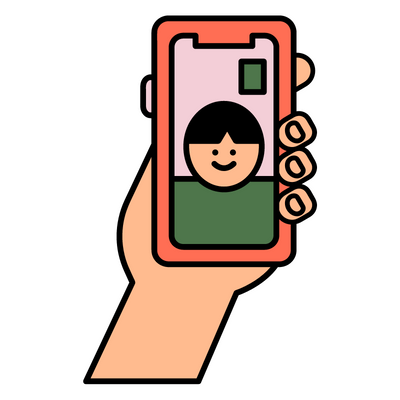
Grooming
is a process of manipulating and preparing someone, often a child or a vulnerable adult, for the purpose of abusing or exploiting them.
The goal of grooming is to gain the trust of the person being targeted and to create an emotional connection with them.
What does grooming look like?
Grooming can involve a range of tactics, such as:
- giving gifts
- offering attention to make someone feel special
- or showing a special interest in someone’s life
The person doing the grooming may also try to isolate the person they are grooming from their friends and family, and create a sense of dependency on them.
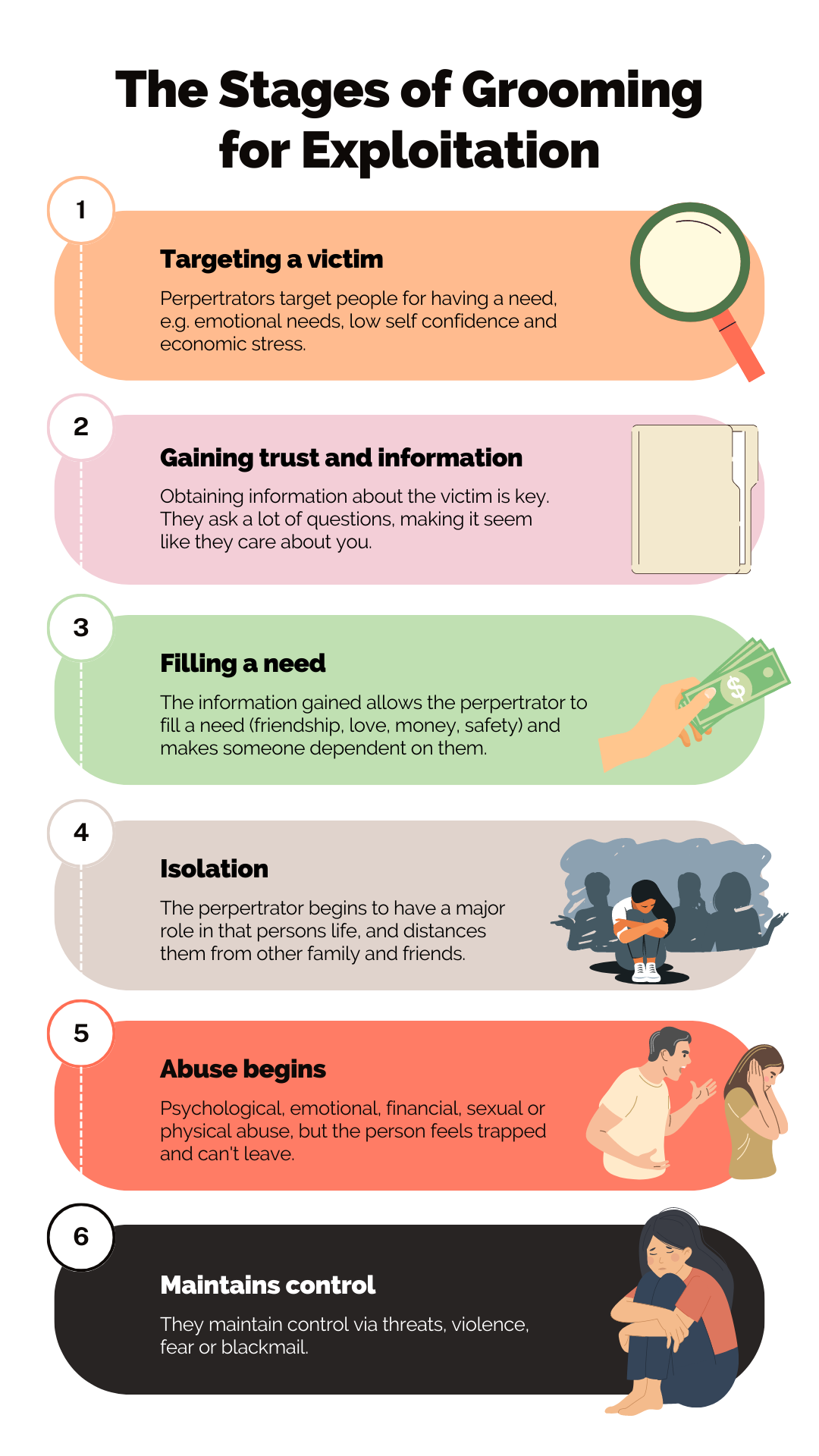


Love bombing
is a manipulative tactic used to overwhelm someone and quickly develop a deep emotional connection.
The term love bombing comes from the idea that the manipulator drops emotional 'bombs' of love and attention on the target, creating a sense of love and emotional dependence.
What does love bombing look like?
- excessive flattery, telling you how special or amazing you are
- declarations of love and commitment by telling you they love you, or want a family with you
- grand gestures of affection, such as expensive gifts or surprise trips.
The ultimate goal of love bombing is to establish control over a person and create a sense of dependency.
Once someone has become emotionally invested in the relationship, the manipulator may begin to withdraw affection or use other forms of emotional abuse to maintain control.
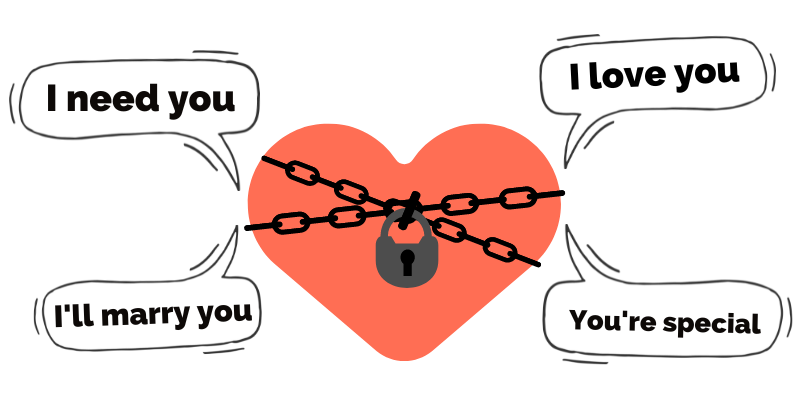
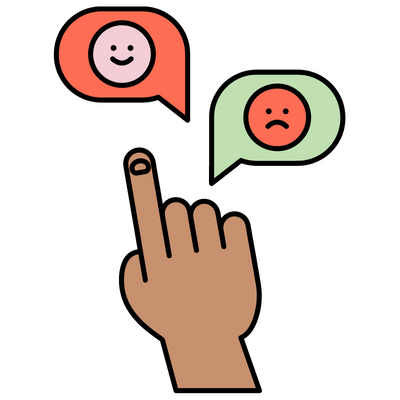
Coercive control
refers to a pattern of behaviour used by an someone to control, dominate, and manipulate another person. It can be both emotional and physical abuse and is often used by perpetrators of Modern Slavery and trafficking.
Coercive control is a serious form of abuse that can have long-lasting effects on a person’s physical and mental health.
What are the signs of coercive control?
Some common tactics used in coercive control include:
- Isolation: The perpetrator may limit your contact with friends and family, restrict access to transport or communication devices, or use threats or intimidation to prevent you from leaving.
- Financial control: The perpetrator may control the finances, and restrict access to money.
- Intimidation: The perpetrator may use threats, aggression, or intimidation to control someone’s behaviour, making them feel afraid or unsafe.
- Gaslighting: The perpetrator may manipulate your perception of reality by denying or distorting the truth, making you doubt yourself.
- Emotional abuse: The perpetrator may use emotional abuse tactics such as humiliation, degradation, or demeaning comments to hurt your confidence.
- Monitoring: The perpetrator may use surveillance to control behaviour, such as checking your phone, whereabouts, email, or social media accounts.
Coercive control is complex and can take many forms. If you feel that someone is controlling where you go, who you seer or you can't make decisions about your own life, reach out for help to a trusted friend, relative or health professional.
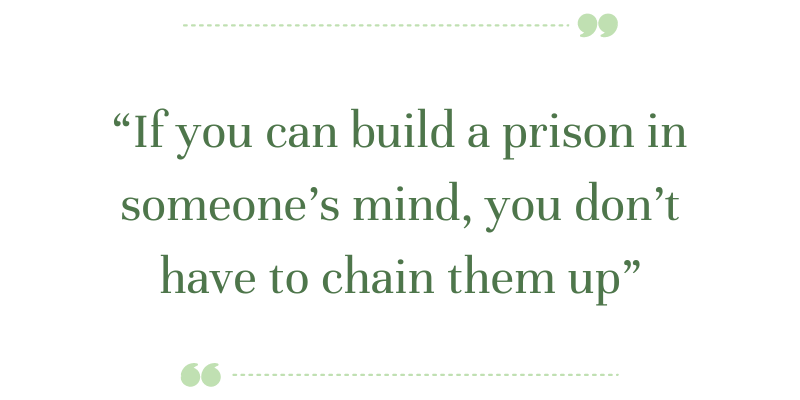

Trauma bonding
refers to a complex emotional attachment that can develop between a victim and an abuser, particularly in cases of prolonged abuse or trauma.
This bond involves a mix of positive and negative emotions, including fear, love, and loyalty.
It can be one of the reasons that some survivors of Modern Slavery struggle with guilt and conflicted feelings about reporting their perpetrator or leaving the situation they are in.
How does trauma bonding develop?
Trauma bonding can develop when someone experiences ongoing abuse or trauma from a caregiver, partner, or other authority figure, and begins to rely on the abuser for emotional support and safety.
The person being victimised may feel a sense of obligation or loyalty to the abuser, even when they are not being treated well. They may feel guilty or ashamed if they try to break away from the relationship.

Breaking free from trauma bonding can be a difficult and complex process, but it's an important step towards healing and finding freedom.
Trauma bonding can be difficult to break, as it often involves deep emotional ties and a sense of dependency on the abuser. However, with support and therapy, it is possible to overcome trauma bonding and build healthier relationships based on mutual respect and trust.
If you are experiencing trauma bonding or suspect that someone you know may be in this type of relationship, it's important to seek help and support from a trusted friend, family member, or mental health professional.
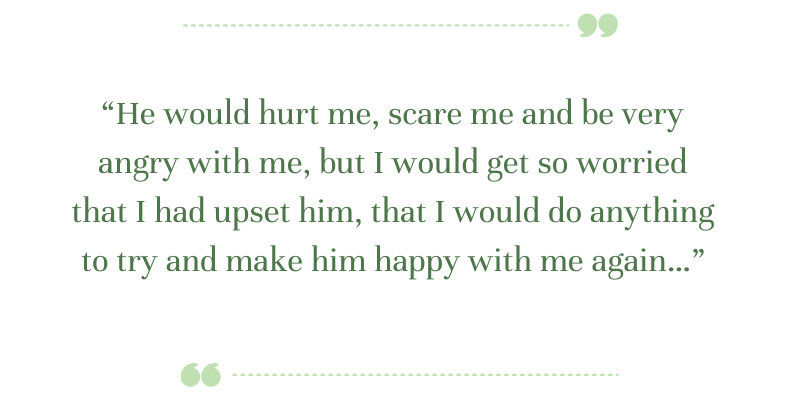
Find out more about exploitation, human trafficking and modern slavery:


